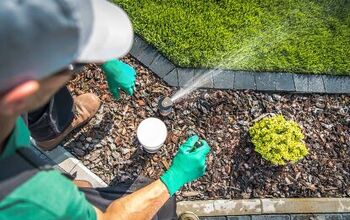What To Do After Termite Fumigation (Here's What You Should Do)

If dealing with termites was a baseball game, you’re now rounding home plate. Dealing with the aftermath of termite fumigation can seem overwhelming but can actually be quite simple. So what exactly do you need to do after termite fumigation?
There is more than one kind of termite fumigation, and each type has a different set of steps for aftercare. For tenting fumigation, aftercare includes airing out your home, cleaning up dead bugs, and disposing of exposed food. For spot treatment, another step would be sealing the drilled holes where the exterminator injected the poison.
As stressful as fumigation can be, understanding your options can help alleviate any worries during the process. In time, with the help of trained professionals, you should be back in your home, safe and sound.
Do You Need Pest Control Services?
Get free, zero-commitment quotes from pro contractors near you.

Brief History Of Termites
Termites are an insect that can be found all over the world with a diet that consists of wood. There are two types of common termites and each has different jobs: the worker and the swarmer termite. They have many similarities to the carpenter ant both in size and function.
The worker termite is light-colored and typically only visible when the interior of the wood has been exposed. These workers are responsible for finding food and the upkeep of tunnels and nests.
The swarmer is a special type of termite that only comes out in the spring and summer. These termites are a dark brown with large wings and have the ability to reproduce. These wings help carry them to another location so that they are able to start a new nest.
Interestingly enough, termites actually have queens, just like ants. These powerful queens can live up to 50 years old and reproduce for up to 10 years.
Ideal Environment For Termites
Termites thrive in warm, dark, damp environments, like a crawlspace. This is why you find so many termites in the foundation of the home. If termites are exposed to dry air for long enough, they will eventually die, hence their affinity for damp places.
Termites aren’t exclusively found in wood but can actually feed off of many plant-based materials because of the cellulose. A few common examples of these food sources are books, plastic, paper, carpet, and drywall. This is why it is important if you suspect termites that you search all areas of the home.
Types Of Termite Fumigation
There are several types of termite fumigation, but the most popular options are tenting and spot treatment. Each has its benefits, but both are well-vetted as remedies for termite infestations.
Tenting Fumigation
Tenting fumigation is the process of termite removal where the home is filled with gas and encased in a tent. The house is then aired out for a few days until it is safe for the homeowner to return.
This is the most popular option for termite treatment. However, it is the most expensive option.
The reason that this is the most popular is that it is so effective at removing termites. If you have a severe infestation or dispersed nests, this is likely the best option for you. Tenting should only be done by a trained professional due to the dangerous chemical found in the gas.
Spot Treatment Fumigation
One of the other popular options is a spot treatment. This treatment is best for those with single-origin nests. This is also one of the more budget-friendly options on the market today. This is not ideal for all infestations because termites will frequently survive this method and re-nest in another area.
Once an inspector identifies the nest, they will drill small holes and inject a termiticide directly into the nest. This method is particularly challenging because you are treating the issue blind, not having visual access to the wood.
What To Do Before Termite Fumigation
There are several things you must do before fumigation. Most importantly, remove any living things in your home. This includes pets (including fish) and any indoor plants as they will die from the chemicals.
Some say that you should remove or bag any exposed food, but this isn’t a universally agreed-upon idea. This is something that you should consult your exterminator about before the process begins.
What To Do After Termite Fumigation
Termites cause a whole slew of damages, and fumigation has aftercare that can take some time. The fumigation process can be long and grueling; if done correctly, you can reap the rewards for years to come.
Airing Out Your Home After Termite Fumigation
Airing out your home after fumigation is most often associated with termite tenting. The gas used for tenting is called sulfuryl fluoride and can be incredibly toxic and even deadly if you’re exposed. This is why airing out for 24-72 hours after treatment is so important.
Throwing Out Exposed Foods
Whether or not exposed foods during fumigation are toxic or not is disputed amongst professionals. Some say that there is no residue after tenting and nothing in your home has chemical danger, while others disagree. It’s best to consult your exterminator to see what they recommend so that you and your family can stay healthy.
If you’re spot treating, it’s not likely that anyone will be exposed to chemicals since they are injected into the nest. If you are treating near any food, it’s best to store it in a different area of your home until after the treatment.
Removing Dead Pests
Fun fact — during the tenting process, all pests will die off, not just termites. This is helpful for anyone struggling with multiple pests in the home, including rodents and larger animals. It is normal to return to your home with dead pests to clean up, or even some live ones.
It is common for pests to survive for up to a week after fumigation. This timeframe is true for all types of termite treatment and shouldn’t be a concern. If you notice pests more than a week after treatment, reach out to your exterminator for advice.
Cleaning
This is another disputed topic amongst the pest extermination world. Some say that clothing, food, and surfaces are safe, and you won’t need to clean them at all. Others claim that wiping down surfaces, disposing of foods, and washing clothes are absolutely necessary.
Consult with your exterminator to see what they recommend in regards to their treatment technique. Or, you can always plan to give your home a thorough cleaning anyway. It might be worth it for your peace of mind if you are concerned about the aftermath.
Sealing Holes
Spot treatment uses small holes to inject the poison into the nests, so you will need to seal the holes. In addition, termites will frequently enter the home via openings in the walls and foundation. These are very important to seal up immediately in order to prevent further damage.
Preventative Care
Now that you’ve concluded the fumigation process, it’s time to start thinking about the future. Here are some ways to prevent further damage:
- Remove Cellulose From Foundation —Since termites feed off cellulose-based products, it’s wise to place wood, cardboard, or mulch away from the foundation.
- Repair And Seal Any Holes — Cutting off entry points is important for all pest control, not just termites.
- Reduce Moisture — Any way you can reduce moisture — dehumidifier, leaky faucets, damp water damage — will deter termites.
- Replace Weather Stripping And Damaged Mortar — Replacing weather stripping around windows and repairing damaged mortar at the foundation can prevent termites from entering.
- Maintain Functioning Gutters, Downspouts, And Splash Blocks — By maintaining well functioning gutters, you will reduce the amount of moisture that comes into contact with your foundation.
- Inspect Home Annually — This is potentially the most important preventative measure that you can take as a homeowner. As you inspect, keep an eye out for the telltale signs of termite damage. Some of the most common signs are buckling wood, mud holes in the wood, and swollen floors and ceilings.
Do You Need Pest Control Services?
Get free, zero-commitment quotes from pro contractors near you.

Related Questions
Does insurance cover termite damage?
In short, homeowner’s insurance typically never covers any kind of pest control or damages. Technically, pest control is “preventable” by the homeowner. Using preventative measures will help make sure that you won’t have to deal with pests in the future.
Are landlords required for pest control?
The answer to this question depends entirely on the situation. If the tenant is at fault — unsanitary conditions, unreported holes, and leaks — they are responsible for pest control fees. The landlord is responsible for any pre-existing pests. In cases where pests migrate from a neighboring unit with issues, the landlord is also responsible for extermination.
What are the dangers of rodent-borne diseases?
Mice in the home are very dangerous for your health. The droppings, urine, saliva, and nests are the main contributors to the spread of disease. The most common diseases accompanying mice are salmonellosis, listeria, and hantavirus, all deadly if severe enough.Some common symptoms of rodent-borne diseases are diarrhea, fever, headache, trouble breathing, and sometimes death. If you see mice in the home, you should deal with them immediately, and if severe enough, hire a professional.

Stacy Randall is a wife, mother, and freelance writer from NOLA that has always had a love for DIY projects, home organization, and making spaces beautiful. Together with her husband, she has been spending the last several years lovingly renovating her grandparent's former home, making it their own and learning a lot about life along the way.
More by Stacy Randall













![10 Best Electric Pressure Washers – [2022 Reviews & Guide]](https://cdn-fastly.upgradedhome.com/media/2023/07/31/9070600/10-best-electric-pressure-washers-2022-reviews-guide.jpg?size=350x220)
![Finishing Basement Without Permit [Is It Really Illegal?]](https://cdn-fastly.upgradedhome.com/media/2023/07/31/9070078/finishing-basement-without-permit-is-it-really-illegal.jpg?size=350x220)












